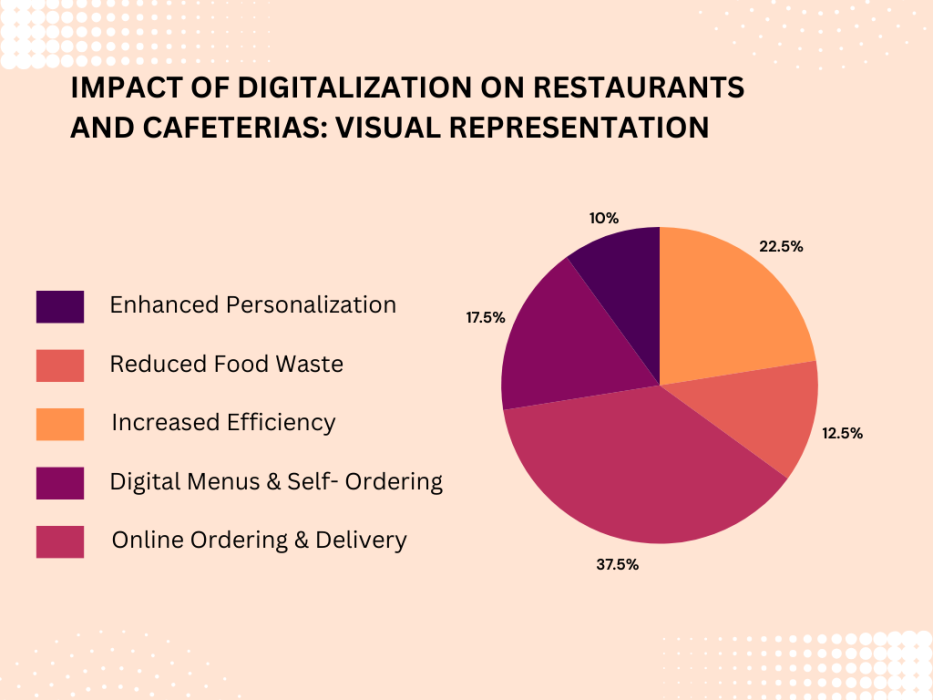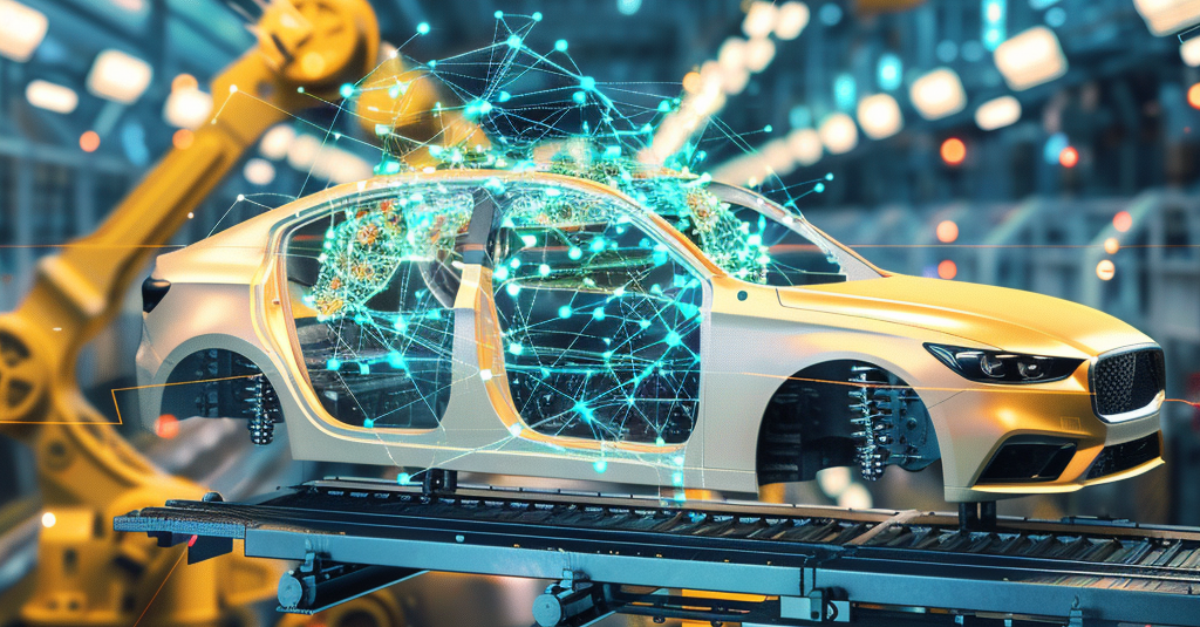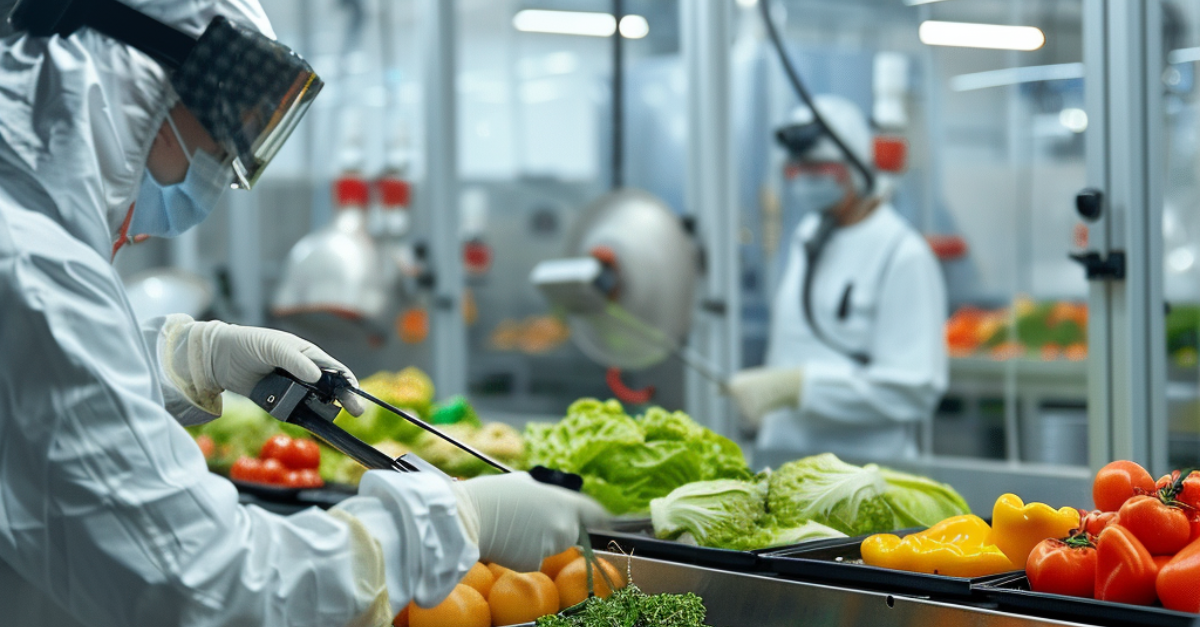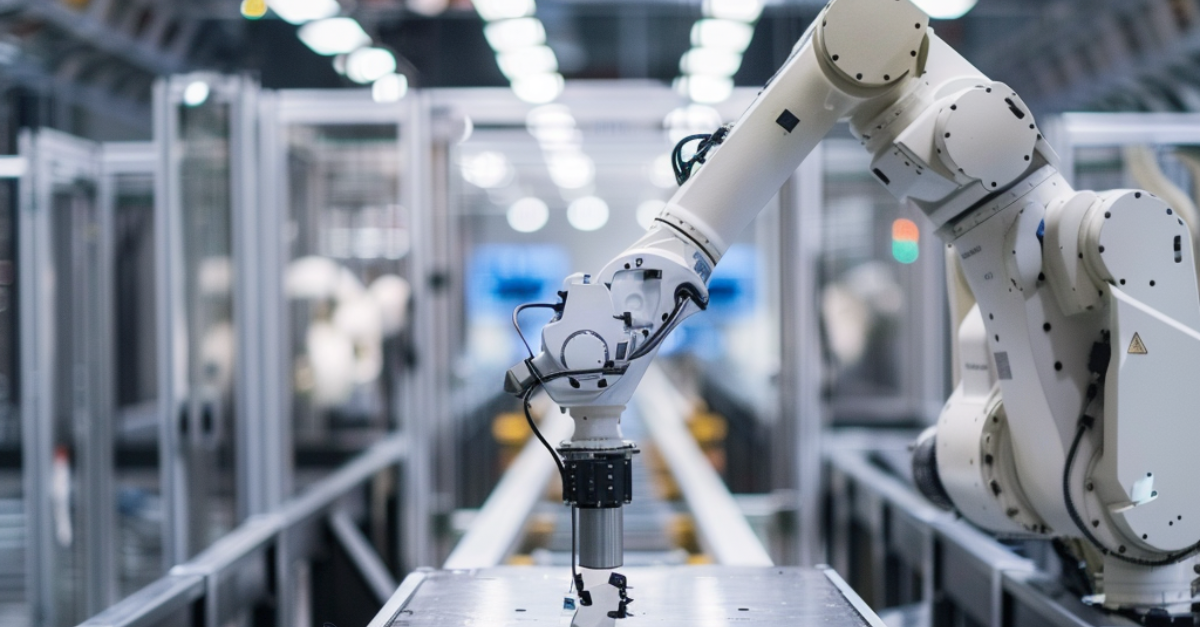Digital Transformation: Revolutionizing the Food and Beverage Manufacturing Industry
Brief: The Industry Facts
- The global F&B industry is a juggernaut, projected to reach a staggering $4.5 trillion by 2026 [source: Expert Market Research].
- The AI in the food and beverages market is projected to experience a Compound Annual Growth Rate (CAGR) of 38.30% between 2 and 2029, reaching a value of $48.99 billion [source: Mordor Intelligence].
- Studies suggest that implementing digital tools like Enterprise Resource Planning (ERP) systems in food manufacturing can lead to an average 11% reduction in operating costs and inventory management.
These numbers shed a bright light on the realm of digital transformation, which is not just an option, it has become a necessity for F&B manufacturers to remain competitive, meet evolving consumer demands, and optimize their operations for efficiency and sustainability. This massive shift from the traditional system to digitalization has made a delicious impact on the market, the facts do the talk here.
Understanding the Change: Digital Transformation
The adoption of digital transformation in the F& B Industry stands at a transformative juncture, propelled by digital innovation that has changed the agriculture landscape of how food is prepared, marketed, and consumed, evolving faster than ever before. It's not only meeting the contemporary demands of consumers but also fostering sustainable business growth. Thus, let’s buckle up to enhance your business by diving deep into this blog where we’ll explore technological innovations revolutionizing food and beverage manufacturing while providing actionable steps for restaurants and cafeterias looking to navigate their digital transformation journey.
With a comprehensive overview of the landscape, this exploration will not only inform but inspire you to consider the tremendous potential, digital transformation holds for the food and beverage industry.
Adoption of Digital Solutions: Case Studies from Leading Restaurants
Domino's: Domino's has significantly enhanced its customer experience through a robust digital ordering platform, which now accounts for over 70% of its sales in the US. The company's focus on data analytics has optimized delivery routes and personalized marketing campaigns, leading to a noticeable increase in market share and customer engagement
McDonald: McDonald's has revolutionized the fast-food industry with its digital transformation initiatives, such as self-service kiosks and mobile ordering systems. These innovations have not only improved operational efficiencies but also enhanced the customer dining experience by reducing wait times and increasing transaction volumes.
Starbucks: Starbucks has set a high standard in digital customer engagement through its mobile app and rewards program, which offers personalized services and enhances customer loyalty. The brand's commitment to digital innovation continues to drive significant traffic to its stores and maintains its reputation as a leader in the coffee industry.
Burger King: Burger King has embraced a comprehensive digital strategy, including the development of its mobile app and loyalty programs, to enhance customer interactions and service efficiency. The brand's focus on omnichannel integration and digital marketing has been pivotal in maintaining its competitive edge in the fast-food industry.
Impact of Digitalization on Restaurants and Cafeterias: Visual Representation

|
Aspect |
Percentage |
|
Increased Efficiency |
22.50% |
|
Reduced Food Waste |
12.50% |
|
Online Ordering & Delivery |
37.50% |
|
Digital Menus & Self- Ordering |
17.50% |
|
Enhanced Personalization |
10.00% |
The Benefits of Digital Transformation: Beyond Convenience
Let’s be honest about how anyone would not like convenience with their favourite food time. Hence, digital transformation in F&B isn't just about bells and whistles. Here are some of the broader benefits that are attracting customers worldwide:
- Sustainability: As displayed above, AI and other digital tools can help reduce food waste at every stage of the food chain. Additionally, blockchain technology is being used to track the origin of ingredients, promoting transparency and sustainable practices.
- Safety and Transparency: Consumers are increasingly concerned about the safety and origin of their food. Digital tools like blockchain can provide verifiable data about ingredients and production processes, building trust with customers.
- Improved Operations: Restaurants and cafeterias can use digital tools for inventory management, staffing schedules, and real-time data analysis to optimize their operations, leading to cost savings and a more efficient business model.
The digital revolution in F&B goes far beyond mere convenience. It's a transformative force that promotes sustainability, builds trust with consumers, and empowers businesses to operate more efficiently. As these technologies are paving the path with immense potential, the challenges that may come in between are necessary to understand. While the benefits of sustainability, transparency, and operational efficiency are undeniable, hurdles need to be addressed to ensure the smooth implementation and widespread adoption of these digital solutions.
What are the Challenges and Opportunities in the Digitalisation of F&B Industry?
Breaking Down the Challenges:
Let's explore these challenges and discover how proactive measures can pave the way for a more sustainable, efficient, and thriving F&B future.
Change Management: Shifting organizational culture to embrace new technologies and processes can be difficult. The doers, your employees may resist change due to fear of job displacement or lack of understanding.
Skilled Labour: Implementing and maintaining complex digital systems often requires a skilled workforce with expertise in areas like data analytics, cybersecurity, and digital marketing. Finding and retaining these talents can pose a significant challenge.
Legacy Systems Integration: Integrating new digital technologies with existing legacy systems can be complex and expensive. These outdated systems may not be compatible with newer technologies, creating roadblocks in the transformation process.
By addressing these challenges you can proactively find the measures to not miss the opportunities that follow.
Breaking down the opportunities that lie ahead:
Innovation and Growth: Digital transformation fosters a culture of innovation and continuous improvement. Experimenting with new technologies can lead to the development of groundbreaking solutions and propel business growth paving a path to be a competitor in the market.
Competitive Advantage: Embracing digital transformation can give you a competitive edge in the market. By offering innovative products and services, you can attract new customers and gain a market foothold with increased efficiency and Productivity.
Increased Efficiency and Productivity: Digital technologies can automate tasks, streamline workflows, and improve overall operational efficiency. This can lead to significant cost savings and increased production output with customer satisfaction.
Enhanced Customer Experience: Digital transformation empowers businesses to personalize the customer experience, offering tailored products, services, and interactions. This leads to higher customer satisfaction and loyalty.
Implementing digital transformation comes with its own set of challenges. But fear not! As you would implement the following strategies, you can easily grab the opportunities that you read above.
Strategies for Overcoming Challenges:
- Develop a clear and actionable digital transformation strategy with well-defined goals and objectives.
- Prioritize change management initiatives to educate and engage employees throughout the process.
- Invest in upskilling and reskilling programs to bridge the digital skills gap within your workforce.
- Modernize legacy systems gradually and strategically to ensure a smooth integration with new technologies.
- Implement robust cybersecurity measures and comply with data privacy regulations to protect user information.
A successful modernization journey of the food and beverage industry would change the way we consume and enjoy the treats that come from farms to our plates.
The Future of Food and Beverage
Digital transformation is not just a trend; it's the future of the F&B industry. By embracing these technologies, companies can improve efficiency, enhance food safety, personalize offerings, and create a more convenient and enjoyable dining experience for customers. This will lead to a more competitive and innovative food and beverage landscape, ultimately benefiting both businesses and consumers.
As the food and beverage industry continues to evolve, it's crucial to stay ahead of the curve by understanding the future trends that will shape the landscape. Let's delve into some key trends that are expected to drive the industry forward:
Personalized Dining Experiences: In the coming years, personalization will play a significant role in how restaurants and cafeterias cater to their customers. From customized menus based on dietary preferences to tailored recommendations, leveraging data to offer personalized dining experiences will be a game-changer. (Fig:2)
Vertical Farming and Urban Agriculture: With the rise of technology, we might see more sustainable food production practices like vertical farming gain traction. This could revolutionize the way we grow food, especially in urban areas. (Fig:2)
Vertical Farming and Urban Agriculture: With the rise of technology, we might see more sustainable food production practices like vertical farming gain traction. This could revolutionize the way we grow food, especially in urban areas.(Fig:2)
Rise of Ghost (Cloud) Kitchens: Ghost kitchens, optimized for online orders and a wider variety of cuisines, are poised to take centre stage in the future of F&B. This trend caters to the growing demand for food delivery, offering convenience and a wider range of options for foodies on the go.
Conclusion
To conclude, It is crystal clear how high-tech tools are transforming restaurants! Fancy things like phone apps for ordering and digital menus are making things way easier for customers. Big chains like Domino's and Starbucks are already using this tech, and it's making them more popular and profitable. Studies show these techy tricks lead to happier customers and more sales for restaurants. The future of food is all about digital gadgets, with even crazier stuff like robot cooks and fancy data analysis on the way. Of course, there will be some challenges, but this digital wave will help restaurants keep up with what customers demand and make massive growth in this fast-paced world where (add hyphen please) Time Is Money!
FAQs
1. What does digital transformation mean for the food and beverage industry?
The digital transformation has significantly altered how customers engage with food and beverage (F&B) businesses. This includes the adoption of online ordering systems and mobile applications, which enhance customer convenience and flexibility. Customers can now easily explore menus, place orders, and personalize their dining experiences using their smartphones.
2. How is digital technology applied in the food and beverage sector?
In the food and beverage industry, digital technologies such as the Internet of Things (IoT), advanced data analytics, cloud computing, and smart sensors are increasingly used. These technologies are pivotal in transforming manufacturing processes within the sector by improving product quality, reducing energy use, and streamlining operations.
3. What impact has technology had on the food and beverage industry?
Technology has greatly increased efficiency and productivity throughout the food production chain—from cultivation and harvesting to processing and packaging. Additionally, technological advancements have influenced how people consume food, altering traditional consumption patterns.
4. What are the advantages of digital transformation in the food industry?
Digital transformation is crucial for strategic planning in the food sector, offering several benefits. These include more efficient production, enhanced supply chain management, and improved customer satisfaction.
Recent Posts







Add Comment
0 Comments